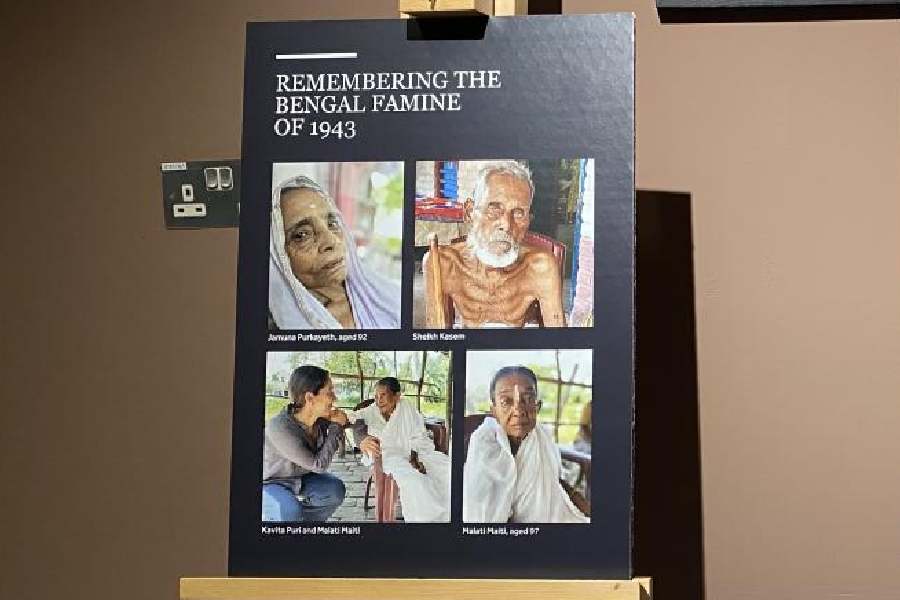 |
| FEEL GOOD factor: A dental clinic done up on the lines of Feng Shui |
For 34 years, it never occurred to P.S. Sundeep to change the sterile-white look of his nursing home. “Like everyone else, I focused on getting the best doctors and equipment,” says the director of Bangalore’s Amar Jyothi Nursing Home.
Sundeep was stunned to see the progress that medical infrastructure had made while browsing the John Hopkins Hospital’s website. “The consultation rooms had a black-and-white chequered floor. The walls were painted orange and white,” says Sundeep.
The inspired hospital director decided to give his nursing home a new look. Amar Jyothi now welcomes patients with a fountain in the reception area. The passages and rooms have striped golden yellow walls. “We used Feng Shui to make the hospital look vibrant and positive,” says Sundeep.
As India’s healthcare industry grows, private hospitals are experimenting with innovative looks to woo patients. “The concept of a hospital has changed. People don’t want a sterile, white atmosphere any more. The idea is to cheer up the patient,” says Sundeep.
Also, with the government permitting 100 per cent foreign direct investment (FDI) in the health care industry, money has become a non-issue. “Since capital is much more easily available now, people are willing to put money in infrastructure,” says Tufan Ghosh, chief executive officer (CEO), Columbia Asia Hospital, Bangalore, which opened last year.
Columbia Asia, which is fully funded by a US firm, is a case in point. Located in a Bangalore suburb, the glass-façade hospital building could pass off as a software firm’s office. The sprawling reception area is painted in bright ochre and pistachio green. Plasma television sets placed across the hospital —there’s one in the café too —inform patients about their turn to meet the doctor. The hospital is completely paperless — the doctors access medical records on computers and patients get their reports on compact discs (CDs). Peppy instrumental music plays in the background.
“Hospitals across the world have moved away from clinical looks. A cheerful ambience helps improve a patient’s state of mind,” says Ghosh. This look will be replicated in the Columbia Asia Hospital scheduled to open in Delhi next year.
Hospitals across India are moving away from the sterile looks and ammonia-smell stereotypes. Mumbai’s L.H. Hiranandani Hospital uses special odour-absorbing chemicals to kill all clinical smells. Among its feel-good facilities is a children’s park for young patients. The Asian Heart Institute in Mumbai cheers the ill with a tall water fountain flowing in its atrium area. To cater to its patients’ gastronomic needs, the heart centre has tied up with the city’s Copper Chimney restaurant. In Delhi, the Escorts Heart Hospital has a travel desk that arranges sightseeing tours and shopping for patients.
Feng Shui — the Chinese equivalent of Vaastu Shastra — is also catching the fancy of hospitals. “Feng Shui uses pastel colours and water bodies to make a room look soothing. Hospitals and clinics are increasingly opting for this look,” says S.B.S. Surendran, a Bangalore-based Feng Shui consultant. Surendran claims to have half a dozen hospitals across India as clients — and new enquiries are pouring in, he says.
Bangalore’s Soukya International Holistic Health Centre believes in being Indian. It offers a rustic living experience to patients. The health centre — which offers treatments for cardiac hypertension, diabetes, arthritis and asthma — is situated on a 30- acre organic farm on the outskirts of the city. There are cows on the farm to supply fresh milk. The architecture is traditional south Indian —with ground level buildings, lamps, bells and lots of natural, wild terrain. For modern-minded patients, there’s a swimming pool, walking track, indoor games facilities and a library.
Says Issac Mathai, chairman, managing and medical director, Soukya, “People don’t want boring, multi-storey hospital buildings any more. A natural setting helps accelerate healing. We have kept our health centre in touch with nature.”
For Rs 5,000 upwards for a room, Soukya caters to the deep-pocketed patient. But mid-level clinics are also making the transition from crude to cheerful. Bangalore-based dermatologist Anil Abraham recently adopted a sunflower and aquamarine theme for his two-room clinic.
The procedure room has sunny yellow walls and sunflower print curtains — even the sheets and towels are in yellow and orange. The adjacent consultation room goes into aqua mode — with a mix of green and blue-coloured walls and a big aquarium. “A cheerful looking clinic improves a patient’s mood even before treatment starts,” says Abraham.
Healthcare is becoming big business in India. According to a Confederation of Indian Industry — McKinsey study on India’s health industry, the country’s spending on health care is expected to increase from Rs 86,000 crore at present to Rs 200,000 crore in the next decade. Health care’s contribution to India’s GDP will increase from the current 5.2 per cent to 8.5 per cent by 2012. “The health care industry is seeing exponential growth. More competition means hospitals need to offer various value added services to woo customers,” says Columbia Asia’s Ghosh.
Bangalore, for instance, has a string of new healthcare facilities in the pipeline. Columbia Asia is constructing two new hospitals in the city. Heart hospital Narayana Hrudalaya is working on plans for a Medi-City. Wockhardt recently started a super-specialty hospital. “As competition soars, the price element becomes irrelevant. Customers want hospitals to offer something extra,” says Ghosh.
Patient perceptions have also changed. “Patients are travelled and well read. They know that 21st century healthcare does not mean white walls and green linen. Hospitals have to cater to them,” concludes Amar Jyothi’s Sundeep.










